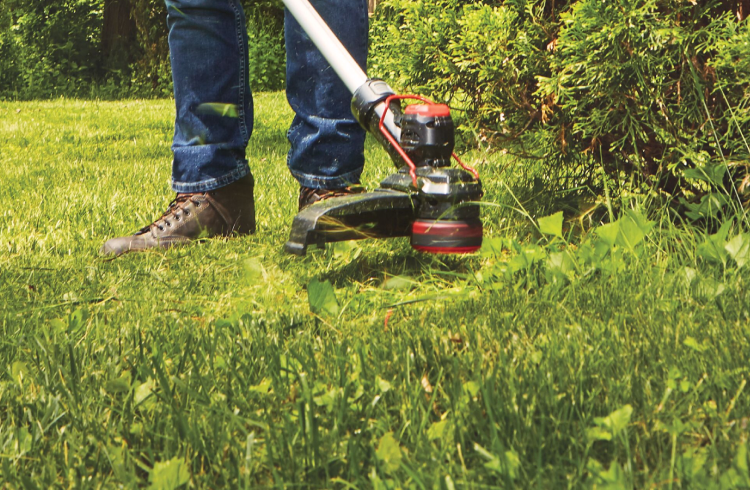String Trimmers


FAQs
-
String trimmers, also known as weed eaters or weed wackers, are essential tools for maintaining lawns and gardens by cutting grass and weeds in areas that are difficult to reach with a lawn mower. There are several types of string trimmers available, each with its own set of features and benefits. When choosing a string trimmer, consider the size of your yard, the type of vegetation you'll be trimming, your physical ability to handle the tool, and your preference for power source (electric, battery, or gas).
-
The terms "weed wacker" and "string trimmer" actually refer to the same tool, which is used for cutting grass and weeds in areas that are difficult to reach with a conventional lawn mower, such as around trees, flower beds, and edges. The difference between the two is purely in terminology, not in function or design.
The term "weed wacker" is a brand name that has become a generic term over time.
-
Straight and curved string trimmers are two variations of the same tool, designed to cut grass and weeds in places that are hard to reach with a lawn mower. The main difference between them lies in the shape of the shaft connecting the handle to the cutting head. Each design has its own set of advantages and is suited to different tasks and user preferences.
Curved Shaft String Trimmers Advantages:
Ergonomics: The curved design tends to be more comfortable for users of average height, allowing for a more natural arm and wrist position during use.
Maneuverability: They are often lighter and easier to handle, making them well-suited for trimming around flower beds, walkways, and other obstacles.
Cost: Curved shaft models are generally less expensive than their straight shaft counterparts.
Curved Shaft String Trimmers Disadvantages:
Reach: The curved design can make it harder to reach under obstacles, such as bushes or outdoor furniture.
Durability and Power: They are typically designed for light-duty work and may not be as durable or powerful as straight shaft models, making them less suitable for heavy-duty or commercial tasks.
Straight Shaft String Trimmers Advantages:
Reach: The straight design allows for better reach under obstacles and can be advantageous for trimming large areas or commercial use.
Versatility: Many straight shaft trimmers can accommodate attachments, turning them into multi-tools capable of edging, bush trimming, and even blowing, among other tasks.
Durability and Power: They are often built for more heavy-duty use, with more powerful engines and sturdier construction, making them a favorite for professional landscapers.
Straight Shaft String Trimmers Disadvantages:
Weight and Balance: Straight shaft trimmers can be heavier and more difficult to maneuver, which might lead to fatigue more quickly than with curved models.Cost: They are generally more expensive, reflecting their increased versatility and durability
-
A string trimmer, also known as a weed wacker, weed eater, or line trimmer, is designed to cut grass and weeds in areas that are difficult to reach with a lawn mower, such as around trees, flower beds, and along fences. It can also be used for creating neat edges along walkways or driveways, but this is not its primary design intention.
An edge trimmer, or simply an edger, is specifically designed to create clean, precise lines between different surfaces, such as the edge of a lawn and a sidewalk, driveway, or garden bed. It's used to maintain or create defined boundaries and can help prevent grass from encroaching onto sidewalks or flower beds. Edgers use steel blades instead of string like string trimmers.
-
Yes, a string trimmer can be used for edging, although it is primarily designed for trimming grass and weeds in areas that are difficult to reach with a lawn mower. Many people use string trimmers to edge along sidewalks, driveways, and garden beds to create a neat and tidy appearance. However, using a string trimmer for edging requires a bit of technique to achieve a clean, straight line.
-
Corded Electric Trimmers: These trimmers are powered by electricity and require an extension cord to operate. They are lightweight, relatively quiet, and suitable for small to medium-sized yards. The main limitation is the range, which is restricted by the length of the extension cord.
Cordless Electric Trimmers (Battery-Powered): These trimmers offer the convenience of portability without the hassle of a cord. They are powered by rechargeable batteries, making them suitable for larger areas as long as the battery charge lasts. They are also quiet and produce no emissions. However, their power and runtime may be limited compared to gas-powered models.
Gas-Powered String Trimmers: These trimmers are the most powerful type, making them suitable for large yards and heavy-duty trimming tasks. They can run as long as there is fuel, offering extended use without the need for recharging or being tethered by a cord. However, they are heavier, noisier, and emit exhaust fumes.
Gas trimmers can be further divided into two types based on their engine design:
2-Stroke Engines: Require a mix of gas and oil for fuel. They are typically lighter and offer a good balance of power.
4-Stroke Engines: Use regular gasoline and have a separate oil reservoir. They are generally more efficient, quieter, and produce fewer emissions than 2-stroke engines but are heavier and more expensive.
Walk-Behind String Trimmers: These are heavy-duty trimmers mounted on wheels, designed for cutting through dense weeds and tall grass over large, rough terrains. They are particularly useful for users who need the power of a gas trimmer without having to carry the weight. Walk-behind models are great for extensive property maintenance where handheld trimmers would be impractical.
Recently Viewed
*20V MAX* battery maximum initial battery voltage (measured without a workload) is 20 volts. Nominal voltage is 18.